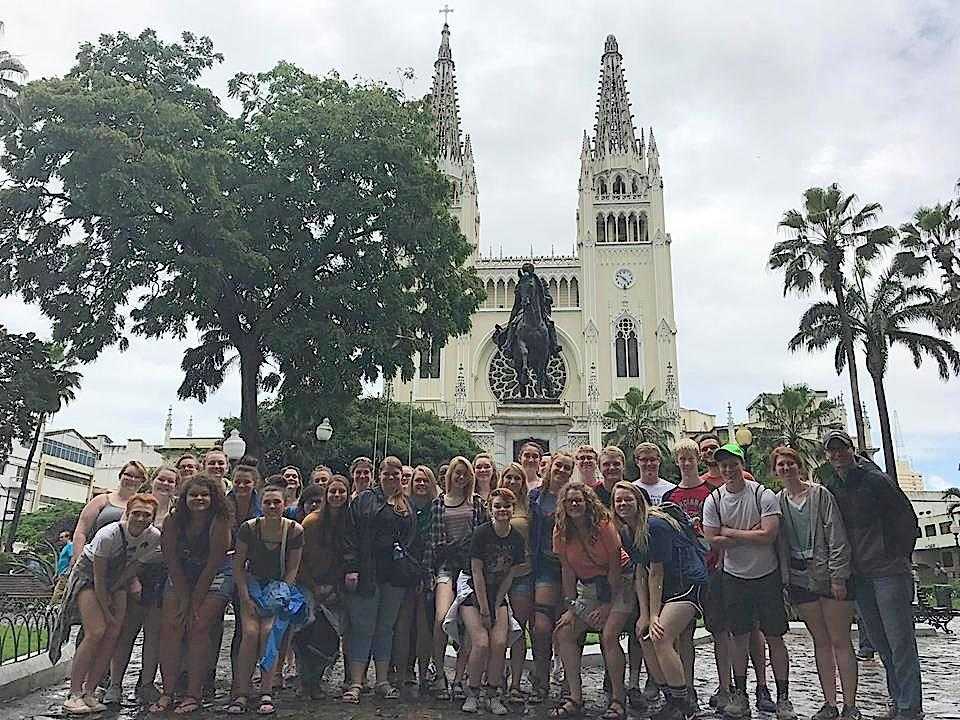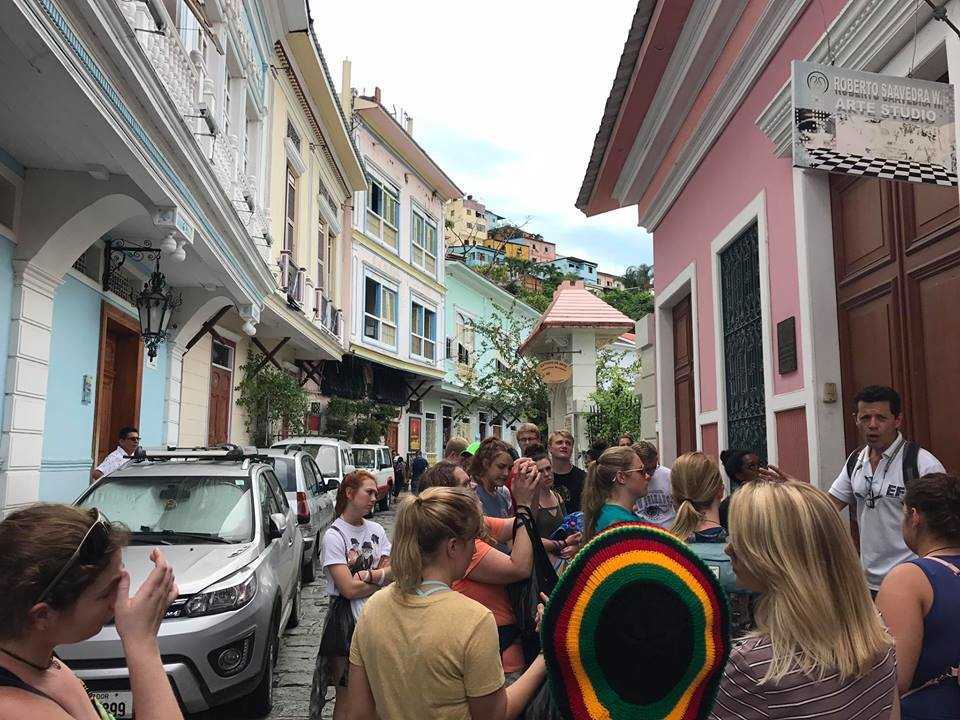South Putnam students see the world through International Travel Program

While most people do their studying abroad in college, two teachers at South Putnam High School have made it possible for high school students to see the world.
Vice Principal Zach Love and teacher Brady Rhodes originally created the International Travel Program in 2015 for students in their advanced placement (AP) history and government courses, but since that first trip to London and Paris have decided to extend the opportunity to all upperclassmen to meet a demand still growing two years later.
“Mr. Love and I firmly believe that international travel has the power to change people for the better,” Rhodes said. “Our entire program is geared towards allowing students to see and experience the way people in other nations live their lives. As they see and explore these nations, our hope is that their worldview is broadened and they become more empathetic global citizens through the impacting experiences they have on tour.”

This year’s group -- 30 students and five instructors (Love, Rhodes, Natalie Hodge, Tiffany Dixon and Theresa Doud)-- recently returned from Ecuador, where students visited Incan ruins and two Unesco World Heritage sites, rode a train, hiked through the mountains, snorkeled off an island and experienced urban and rural culture.
“It was really cool just to see how they lived,” Senior Katlyn Rector said. “They grew their own food. They had a house, and then it was blocked off from the neighborhood, and then they had their little garden for that whole family. They would just walk their cows and sheep down the road.”
The altitude and location of the country made it possible for the students to visit several climates (the Andes highlands, the Amazon rainforest, the tropics of the coast and the islands) during their week-long trip. The students hiked an average of six miles a day, once at 13,000 feet.
“I really enjoyed being in the mountains a lot,” Senior Lois Cheatham said. “And I liked seeing the mountains outside my window when I woke up.”
The food was also memorable, featuring rice, fresh fruit and juice, avocadoes, llama and guinea pig.
“We tried llama,” Senior Jonah Sanders said. “It wasn’t bad. I think everyone wanted to try guinea pig, but we didn’t get the chance to.”
In cities like Cuenca and Quito, students got to see carefully preserved Spanish colonial architecture from the 1500s.
“I thought the architecture was -- it was really neat,” Sanders said. “It’s a lot different from here. I think that’s what I enjoyed, just looking at the buildings, like the churches and stuff like that. It was really pretty.”
But perhaps the most exciting part of the trip was being set loose on 15 blocks of Cuenca during the South American Cup.
“It’s important to Mr. Love and I that students have some experiences struggling with a language barrier,” Rhodes said. “The whole country was shut down; everyone was watching the soccer match. So a group of students went and they bought Ecuador soccer jerseys for $6 a piece and they went to watch the match. But they picked the one Columbian restaurant in the city of Cuenca.”
Sanders, a member of that group, said, “Our waiter was super cool. It was hard trying to talk to him, but it was just really cool. I’ve taken Spanish III. I took it last year so I kind of forgot a little bit, but going into it you pick up on so much more than just being in school. I learned so much just being there for that short amount of time.”
Experiences like this are part of the reason why Love and Rhodes have kept parents and relatives from joining the students on the trip, but they have opened a tour to community members instead. This year’s trip, set to take place in June, will be to Scotland and Ireland (visit www.eftours.com/1766375wd to register, must be at least 18).
With all that the trips offer, it’s surprising they’re so affordable.
“It’s not as much as people think,” Rhodes said. “The cost for students to go on this Ecuador trip, for the students that signed up right away, was $2,500. And Mr. Love and I try to keep every trip that we do under $3,000 for students and we plan two years out. If you’re a student who wants to be on a monthly payment plan, then roughly you’re looking at $125 a month. So we like to tell students that if you wanted to you could go and work a part-time job five hours a week at minimum wage and that would cover the cost of the trip. And we’ve had students who’ve done that. Both trips we’ve had students who’ve paid for every single dime of the trip on their own.”
The 2019 trip to Berlin, Prague, Krakow and Budapest has already sold out, all 42 students seats in just three days. And for the students who have gone on the trip, the desire to study abroad after high school is strong.
“I want to go to Africa,” Cheatham said. “I want to help the communities flourish there. And I really like seeing different types of wildlife too.”
Rector said, “I want to go all over Europe. I haven’t picked a certain country, but I’ve heard a lot of things about traveling abroad. Everyone I’ve talked to loves it.”
